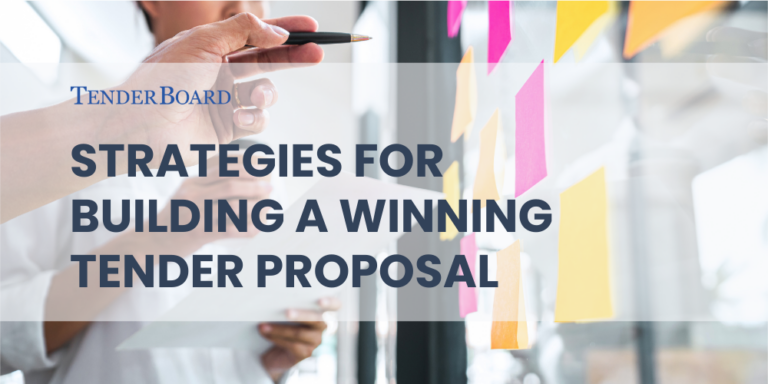Pricing is always a main consideration when submitting proposals or quotations to a customer, so coming up with a competitive pricing strategy is important to winning the deal.
So, how do you ensure you are strategically positioned to winning this deal? And, do you know which competitors are likely to bid and their bidding prices?
Pricing your products or services right is imperative in winning deals because your buyers want to know they are receiving the best value for your goods & services. Knowing the right pricing strategy takes some studying and research, and having access to data, such as TenderBoard’s Past Tender Data, could help you with this.
When looking at pricing, you need to make sure:
- You are not priced too high that your proposal does not get considered
- You are not priced too low that you cannot cover your expenses
- Your pricing is a true reflection of your tendering strategy (where you show your buyers they will get the best value from you)
So how do you decide on your pricing strategy?
The suppliers who win more deals consistently use data to guide their proposals, and pricing strategy is no different. Here are a few ways to use data for your pricing strategy:
Searching for similar past tenders
In TenderBoard’s Database, you can filter past tenders by buyers, participants, date opened etc. Using this, you could use the information from similar past tenders to find:
- Average proposal prices
- Price range
You will get a good gauge of how the market is pricing goods & services similar to yours by collating the bid prices sent in by participants in previous similar tenders.
Based on the range of prices you’ve seen, you want to make sure you are not priced higher than the highest, or it may be out of the running even before the buyer reads your proposal.
At the same time, make sure you are not priced lower than the lowest, unless you are competing based on pricing. A common mistake we’ve seen suppliers make is that they price themselves too low just to win the deal that the awarded value does not cover their cost. (Side fact: Did you know that 40% of tenders are awarded to the lowest bid, while 10% are awarded to the highest bid. In others, a good 50% of deals are awarded to bids that aren’t at the extremes of the price ranges).
Searching for similar past tenders from the same buyer
You would also want to see if the current buyer you’re looking to submit your proposal to has put up a similar tender in the past. If there is data on similar tenders from the same buyer, some things to consider when reviewing the information are:
- Who won the most recent tender? Who won the tender before? Is there an incumbent?
- At what pricing was the tender awarded?
- Was the awarded pricing the lowest bid?
Your pricing strategy should change based on the answers to the questions above. If there is an incumbent, you will need to plan your pricing and proposal carefully to make sure you stand a good chance of overcoming the incumbent’s advantage, while also making sure your proposal stands out from other potential bidders’ proposals.
Are there other patterns to how suppliers are chosen? Does the lowest bid always win? Or does the buyer always award to different suppliers every time they issue this tender? If you can identify these patterns accurately, you could gain an advantage by ensuring your proposal makes use of that information.
Conclusion
With access to data, you could employ data-driven analyses to your tender pricing strategy, creating a proposal that shows buyers you are the best supplier for the job. Looking at similar deals from the same buyer or different buyers would also give you a sense of the market, your competitors and your potential buyers, so it’s always useful to keep updating your data to keep up-to-date.
Platforms like TenderBoard provides you with a database of past tenders across over 40 sites and 1000 buyers, keeping an up-to-date record so you would not have to track this manually.













